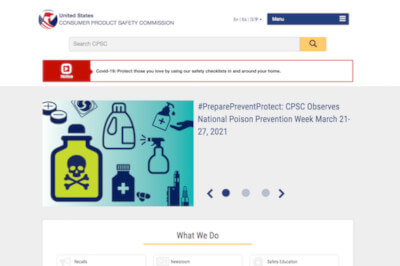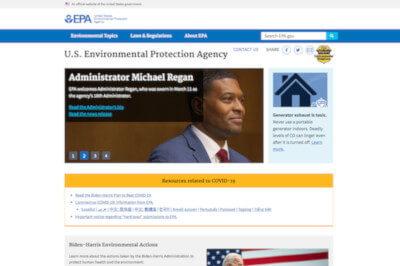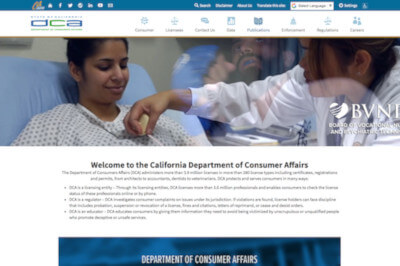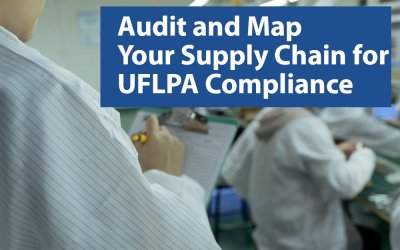If you are looking to import and sell furniture in the USA, you need to know the various regulations governing this industry.
Like many other consumer products, substandard furniture can cause injury and even death. To prevent such occurrences, the U.S. Consumer Product Safety Commission (CPSC), alongside other accredited bodies, offers guidance, oversees compliance, and establishes best practices for industry players.
As an importer, complying with these regulations is in your best interests. Importing substandard furniture can damage your brand reputation, lead to costly fines and recalls, and result in injuries and death in the worst-case scenarios. In 2010, for instance, the CPSC reported 32 crib deaths over nine years due to drop-side failures.
Here we cover five sets of regulations you should familiarize yourself with when importing furniture to the USA.
Table of Contents
#1 Understanding CPSC Regulations
The U.S. Consumer Product Safety Commission (CPSC) is a federal agency established in 1973 to oversee consumer product safety. It administers and enforces federal laws to protect consumers from risk, injury, or death arising from manufactured goods.

U.S. CPSC Website
To combat the flammability of upholstered furniture, the CPSC is responsible for enforcing the Flammable Fabrics Act (FFA). This Act establishes performance, certification, and labeling requirements for upholstered furniture. To meet compliance, manufacturers will have to either:
- Use smolder resistant cover materials that pass a cigarette ignition performance test, or
- Place fiber barriers that meet smolder and open flame-resistance tests.
The CPSC pays particular attention to children’s furniture under the Consumer Product Safety Improvement Act of 2008 (CPSIA). Among other things, it establishes lead content limits to 100 parts per million and prescribes a lower lead limit (90pmm) for paint and surface coatings.
This Act also requires importers of children’s furniture to conduct third-party lab testing in accredited labs before importing to the USA. The goods must be accompanied by a Children’s Product Certificate (CPC) that shows compliance with all set regulations.
#2 Understanding EPA Regulations
The United States Environmental Protection Agency (EPA) regulates the importation of materials that may harm human health and the environment.

EPA Website
The agency sets the Formaldehyde Emission Standards for Composite Wood Products under the Toxic Substances Control Act (TSCA). This Act guides mills, fabricators, importers, and distributors to reduce harmful formaldehyde exposure that certain wood products may emit.
Specifically, it regulates hardwood plywood, medium-density fibreboard, and particleboard, all of which are commonly used to make furniture, kitchen cabinets, and children’s toys. The Act requires that these regulated composite wood products or their finished goods be certified as compliant under the TSCA Title VI or the California Air Resources Board (CARB) by a third-party certifier approved by the EPA.
The EPA also sets National Emission Standards for Hazardous Air Pollutants (NESHAP) emanating from the surface coating in metal and wood furniture. Wood and metal furniture may emit hazardous air pollutants (HAP) such as xylene, toluene, and glycol ethers. NESHAP seeks to limit these emissions in both wood and metal furniture below the major source threshold of 14,800 Mg/yr.
#3 Understanding FTC Requirements
The Federal Trade Commission was established by the Federal Trade Commission Act to protect consumers from unfair and deceptive business practices. The FTC Act stops, investigates, and prosecutes unfair competition cases, fraud, and dishonest acts across broad sectors of the economy.

FTC Website
Under the FTA Act, the FTC has passed several regulations to protect consumers, including the Textile Fiber Products Identification Act. This Act regulates the use of second-hand or reused stuffing in upholstered products such as cushions and mattresses. Specifically, it requires that such products have a well-secured tag or label about 2 by 3 inches in size, stamped or printed in English clearly stating that the stuffing used is ‘second hand,’ ‘reused’ or ‘previously used.’
#4 Understanding Requirements in the State of California Technical Bulletin 117
The California Technical Bulletin 117 is a flammability standard updated in 2013 to regulate the safe production of upholstered furniture. It requires that all cover fabrics, barrier materials, and resilient filling materials used to produce upholstered furniture meet specific smolder resistance standards.

California Department of Consumer Affairs website
Previously, the TB 117 standard required that filling materials in furniture withstand an open flame test for 12 seconds. To meet this requirement, furniture manufacturers added flame retardants such as polyurethane foam. These retardants were found to be ineffective in an actual fire and could also be ingested by people and pets, leading to illness.
In 2013 TB 117 was replaced by TB 117-2013, which discontinues the open flame test and calls for modified smolder tests in line with the Upholstered Furniture Action Council (UFAC) voluntary smolder standard. Similarly, each upholstered item must meet the California Flammability Label requirement. This is a permanent label confirming that the item complies with U.S. CPSC requirements for upholstered furniture flammability.
Companies planning to sell upholstered furniture in California must comply with TB 117-2013 — failure to do so will lead to fines and penalties.
#5 Understanding USDA Requirements
The United States Department of Agriculture (USDA) regulates the importation of certain wood products (including wooden furniture) to the USA. It does so to restrict the transfer of pests such as wood-boring beetles and to curb trade in endangered tree species.

USDA Website
The USA and China have agreed on certain specifications to be met by approved manufacturers. These manufacturers must observe fumigation and heat treatment requirements, pest control measures, traceability, and quality management.
If you are looking to import wooden furniture from China, you must buy from an approved manufacturer. You will also require an import permit which is available for application on the USDA APHIS website. This application takes approximately 30 days. The import permit specifies details such as wood species, value, country of harvest, and kind of treatment required.
Conclusion
As a consumer product, furniture is regulated by the CPSC and other bodies such as the EPA to protect consumers against harm, injury, or death resulting from substandard products. Some furniture categories, such as children’s furniture, require lab tests to ensure that they meet USA conformity standards. The process of preparing for lab tests can be complicated, but we have put together the following guide to help you get started.
Lab Testing: How to Get Started
As a consumer product importer, lab tests help you ensure that your products are compliant with regulations in the country of importation.
We’ve put together this guide to help you get started with lab testing so that you can make your products available for sale sooner rather than later. Avoid fines and customs issues by starting off on the right foot.





I bought a sofa that had a label folded and stabled that had a can cause cancer warning which I would not of been aware of if I had not looked under the dofa and discovered it. I was not told about this when ordering or at the time of receiving the sofa How can this be?
Hi Deborah,
The label you saw is most likely a California Prop 65 warning. In general, it’s nothing to worry about.
Many people have criticized Prop 65 for being poorly drafted. According to a Los Angeles Times article, “The profusion of warnings stemming from California’s landmark consumer safety law has left shoppers over-warned, under-informed and potentially unprotected.”
It’s possible that the chemicals it contains may only cause cancer in extremely high amounts or under certain unusual circumstances. As a general rule, these labels are not very helpful.
Purchased fabric headboard; arrived with no dents or scrapes but after careful removal an inside brace (compressed wood)was broken in half, ripping back fabric cover. Wayfair requires buyer to pay the pricey return cost, specfying what carrier must be used . Manufacturer denies damaged product was packed and shipped to unload on unaware buyer, offering 20% then 25% when I rejected 20%. Does the FTC investigate this type fraud? I’m certain with social media it will be possible to prove this is ongoing and not an isolated incident.
Hello Sherie,
Sorry to hear about your situation. Because this is outside of our area of expertise, we recommend consulting with a consumer protection lawyer who specializes in this area.
I purchased a couch & recliner some years ago. I was shocked at the materials used to make the couch. I found the structure to be put together on one side different from the other causing it to not be uniform as it should’ve been and very thin strips of wood used on the entire structure. The most shocking is when I removed the cushions to clean underneath I had no idea the part that holds the cushioned arms up was no more than very hard cardboard shaped for the style of the sofa. This should be against the law as it is surely a fire hazard in my opinion Also no where on the tag does it say any of the materials have been approved or tested for fire hazzard. It also stated that one of the materials is of unknown kind pad. They both state they were made in the USA. I would have thought it would have been made much better than it was. In a year’s time it needed replacing which is pathetic to pay for something that should have lasted much longer especially in a home where I lived alone and it was seldom used. We need stronger consumer protection laws so we know more about the purchases we make and manufacturers held to better standards than they are doing.
I am surprised that there’s no mention of the manufacturer requiring a product manual available, especially if the product is AC operated. I just bought 2 reclining chairs which also includes 3 zones of heating, plus built in phone chargers and a battery in case of AC power loss.
There was no manuals included in the delivery. I haven’t been able to find any website providing a manual, not even at the US manufacturer’s website.